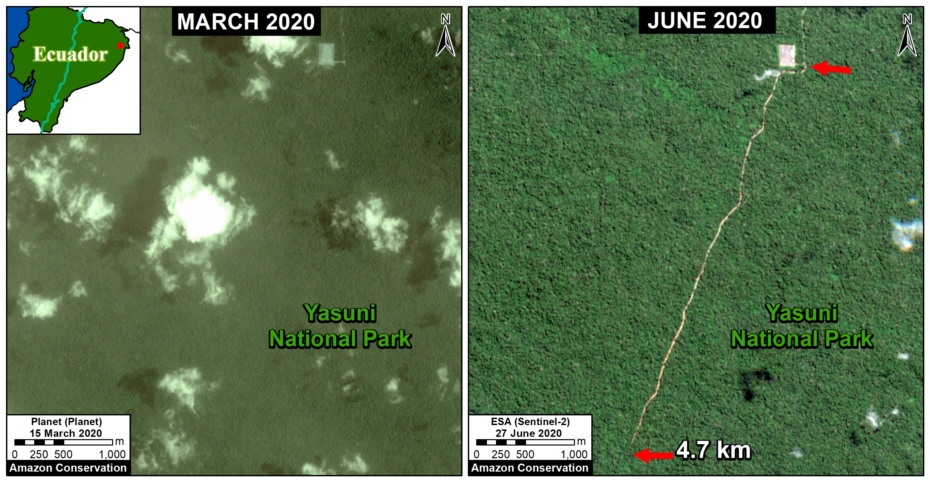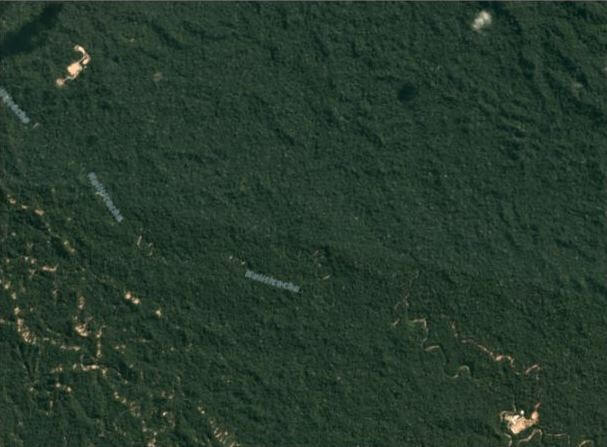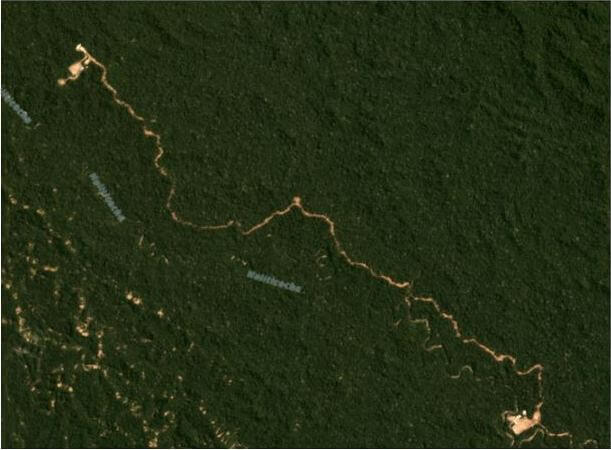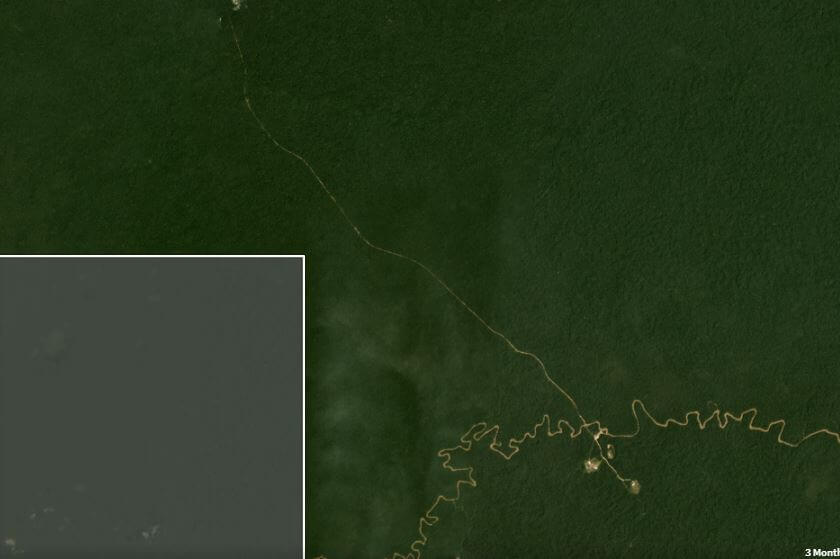Yasuní National Park, located in the heart of the Ecuadorian Amazon, is one of the most biodiverse spots in the world and overlaps ancestral Waorani territory. In the recent MAAP #114, we showed the construction of four new oil drilling platforms (and access road) in the controversial ITT oil block, located in the heart of Yasuní.
Here, we show that beginning in mid-March 2020, we detected the construction of a new access road heading further south from the last platform (Image 1). As of early May, this road construction was 4.7 km through primary forest.
Updated: June 30 (4.7 km); June 14 (3.7 km); May 17 (2.2 km).






